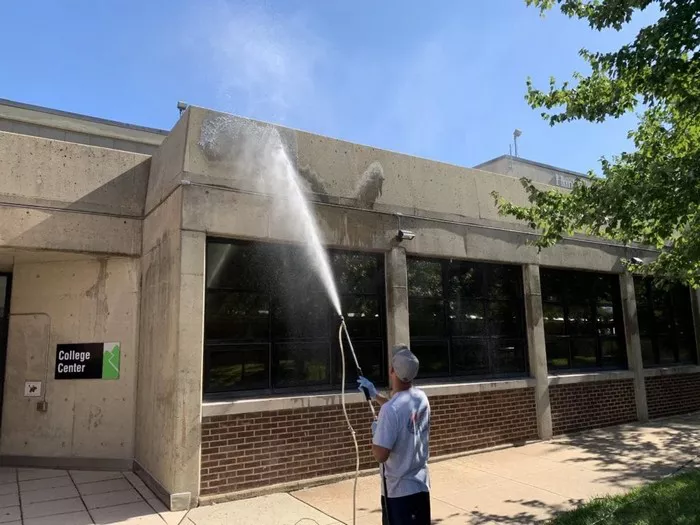Pressure washing has become an indispensable tool for homeowners looking to maintain the cleanliness and appearance of their properties. Whether it’s removing stubborn dirt from sidewalks, rejuvenating outdoor furniture, or giving your vehicle a sparkling wash, a pressure washer can make these tasks a breeze. However, choosing the right PSI (pounds per square inch) pressure washer for your home use is crucial to ensure optimal cleaning results without causing damage to surfaces. In this guide, we’ll delve into the intricacies of PSI, discuss typical home cleaning tasks, explore different pressure washer types, and provide practical recommendations to help you make an informed decision.
Understanding PSI
PSI, or pounds per square inch, is a unit of measurement that quantifies the pressure exerted by a pressure washer’s water flow. It’s a fundamental metric in pressure washing as it directly correlates with the machine’s cleaning power. In simpler terms, higher PSI means more forceful water pressure, which can tackle tougher stains and grime effectively.
Home Use Requirements
Homeowners often have a variety of cleaning tasks on their to-do list, ranging from washing vehicles and cleaning sidewalks to revitalizing decks, siding, and outdoor furniture. Each of these tasks demands a different level of cleaning power, and choosing the appropriate PSI is key to achieving optimal results without causing damage. For instance, washing a car requires gentler pressure compared to blasting away grime from concrete surfaces.
Pressure Washer Types
When it comes to pressure washers for home use, there are three primary types to consider: electric, gas-powered, and battery-operated models. Each type has its own set of advantages and disadvantages, including differences in PSI output and portability.
Electric Pressure Washers: These models are typically lighter and more compact than their gas-powered counterparts, making them easier to maneuver and store. They’re suitable for light to medium-duty tasks and often have lower PSI ranges compared to gas-powered units.
Gas-Powered Pressure Washers: Gas-powered pressure washers offer greater cleaning power and higher PSI levels, making them ideal for tackling tough stains and large cleaning projects. However, they tend to be bulkier, noisier, and require regular maintenance.
Battery-Operated Pressure Washers: Battery-operated pressure washers provide the convenience of cordless operation, making them ideal for areas without easy access to power outlets. While they offer portability, their PSI output may be lower compared to electric and gas-powered models.
Ideal PSI Range
Selecting the right PSI range for your pressure washer depends on the tasks you intend to perform. Here’s a general guideline based on common cleaning activities:
1. Light-Duty Tasks (1300 to 2000 PSI): Washing cars, patio furniture, and delicate surfaces.
2. Medium-Duty Tasks (2000 to 3000 PSI): Cleaning decks, driveways, sidewalks, and siding.
3. Heavy-Duty Tasks (Above 3000 PSI): Removing tough stains, paint, and graffiti (may require professional-grade equipment).
Choosing a pressure washer within the appropriate PSI range ensures efficient cleaning while minimizing the risk of surface damage.
Consideration of Surfaces
When selecting a pressure washer, it’s essential to consider the type of surface you’ll be cleaning. Delicate surfaces like cars, wooden decks, and painted surfaces require lower PSI to prevent damage, while tougher surfaces like concrete can withstand higher PSI for more effective cleaning. Using the wrong PSI setting can result in etching, gouging, or stripping away paint and finishes.
Adjustable Pressure Settings
Opt for pressure washers with adjustable pressure settings, allowing you to customize the PSI according to the task at hand. This versatility ensures optimal cleaning results while minimizing the risk of damaging surfaces. Whether you’re washing delicate patio furniture or blasting away grime from concrete, adjustable pressure settings give you greater control and flexibility.
Portability and Storage
For home users, the size and weight of a pressure washer can significantly impact usability and storage convenience. Consider the dimensions and portability features of the pressure washer, especially if you have limited storage space or need to transport the machine frequently. Compact, lightweight models are easier to maneuver and store, while larger units may offer greater cleaning power at the expense of portability.
Budget Considerations
When evaluating pressure washers, it’s essential to balance performance with budget constraints. While high-end models may offer advanced features and greater cleaning power, there are plenty of affordable options available that provide excellent value for home use. Evaluate your cleaning needs and budgetary constraints to find a pressure washer that offers the best combination of features, performance, and affordability.
User Reviews and Recommendations
Before making a purchase, take the time to research user reviews and recommendations for specific pressure washer models. Real-world experiences from other homeowners can provide valuable insights into the reliability, performance, and durability of various brands and models. Look for pressure washers with consistently positive reviews and ratings, indicating customer satisfaction and reliability.
Maintenance and Safety Tips
To prolong the lifespan of your pressure washer and ensure safe operation, follow these maintenance and safety guidelines:
1. Regular Maintenance: Clean the machine after each use, check for leaks, and inspect hoses and fittings for damage. Follow manufacturer guidelines for maintenance tasks such as oil changes and pump maintenance.
2. Safety Precautions: Always wear appropriate safety gear, including eye protection and closed-toe shoes, when operating a pressure washer. Never point the spray nozzle at yourself or others, and avoid spraying electrical outlets, power sources, or delicate surfaces.
3. Proper Storage: Store the pressure washer in a dry, well-ventilated area away from extreme temperatures and moisture. Drain the pump and hoses of water to prevent freezing and damage during storage.
By following these maintenance and safety tips, you can maximize the lifespan of your pressure washer and ensure safe and effective operation for years to come.
Conclusion
In conclusion, selecting the right PSI pressure washer for home use involves considering factors such as cleaning requirements, surface types, pressure washer types, and budget constraints. By understanding these key considerations and following practical recommendations, you can choose a pressure washer that meets your cleaning needs while delivering optimal performance and reliability.

